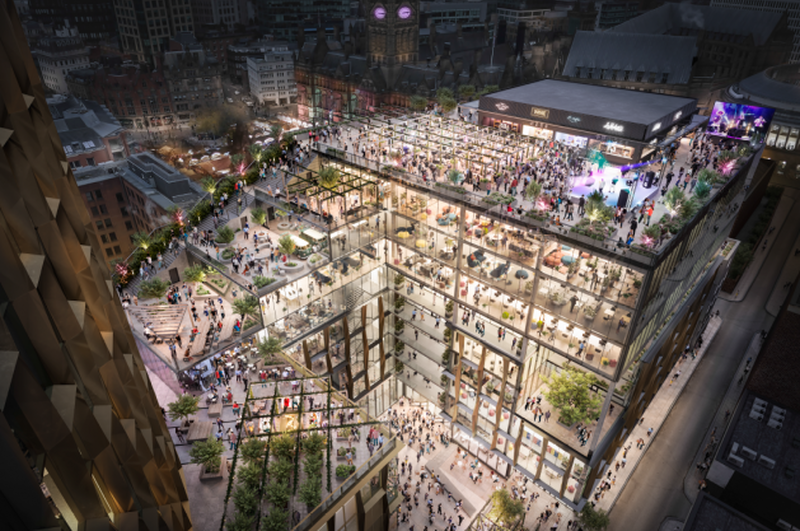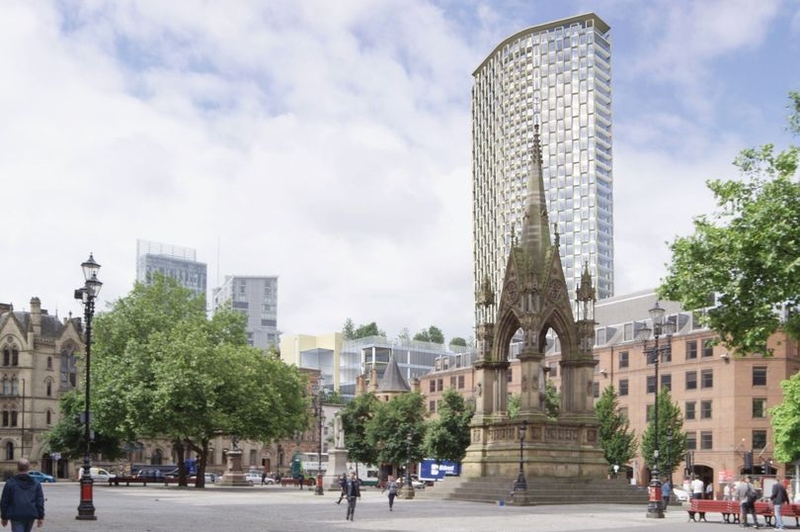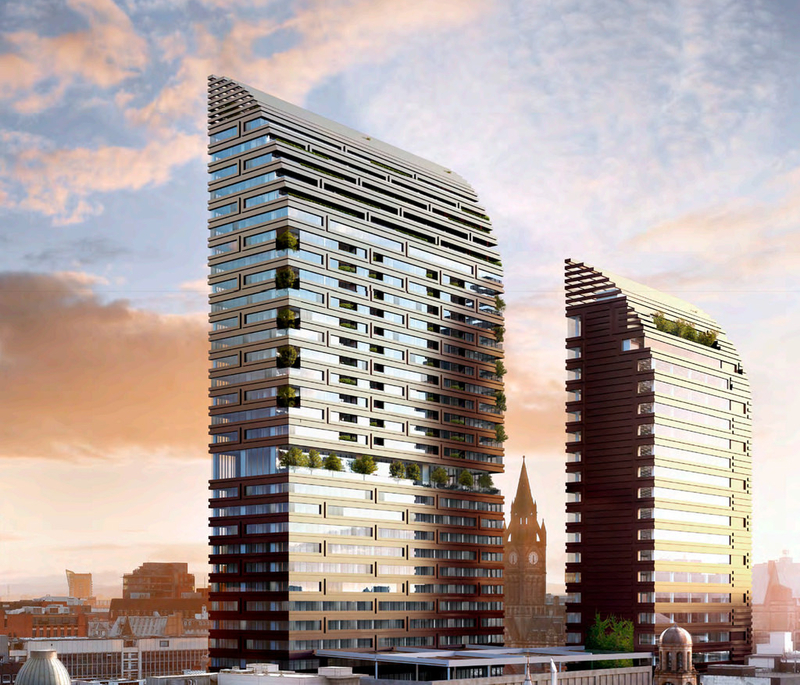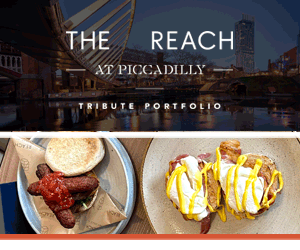Jonathan Schofield on why Gary Neville, Stephen Hodder and city planners should ignore the bureaucratic fudge
YOU don’t read a Historic England report, you translate it.
For anything over two hundred words you assemble a panel of experts including one or two prominent linguists. You get a crate of beers in and some high-energy snacks. Maybe some blankets for later should the going get really tough.
The Historic England advice to Manchester Planning about the Gary Neville-led St Michael’s development is typical. The prose is Sahara-dry and the language so ultra-cautious you want to shake the letter and shout, “Bloody hell, just get on with it, would you?”
Then.
At last.
There’s a decision.
And (dramatic drumroll please) Historic England find they are ‘unable to support the application on heritage grounds due to the cumulative harm that would be caused to highly graded listed buildings’.
Confidential thinks they are wrong.

There are four main reasons for this lack of support.
The view of the main civic buildings from the Princess Street side of St Peter’s Square would be spoilt because you’d be able to see the proposed St Michael’s tower behind the Town Hall Extension. This would destroy ‘the experience of the Town Hall Extension’ and its relationship with the Town Hall. Well, maybe, a bit. Or, actually, not at all if you go and stand there and look.
READ: St Michael's plans submitted - now let's get moving (21 Dec 2017)
Most importantly the view from the corner of Albert Square and Princess Street of the Albert Memorial would be ruined. This is because the spire of the Albert Memorial would not now rise as it does into clear air, but have St Michael’s tower looming behind it (as in the CGI lower on this page).
Confidential thinks the opposite. The CGI indicates that the Albert Memorial will become more prominent once it has the Neville tower as a backdrop, it will be the detail on the canvas. Further, if we really want a perfect view of the Albert Memorial from the surrounding streets, then it’d be best to fell the trees that presently block sight lines when they are in leaf. Heaven forfend.

There are two further points. Historic England think the proposed tower might cause damage to the ‘visual dominance’ of St Ann’s Church tower as viewed from New Cathedral Street, although they concede that Beetham Tower and the Great Northern Tower already do a pretty good job of that.
Finally, they’d also prefer if the synagogue on Jackson’s Row was preserved as it makes a ‘positive contribution’. Stepped back from the street as it is and mangled, badly built, badly designed and most importantly falling down, this is very open to debate.
Historic England seem to be saying that while they are not objecting to the proposal they are not supporting it
“We weren’t upset by the report,” says Stephen Hodder of Hodder+Partners who designed the St Michael’s scheme. “We understand what Historic England are saying but we are also pleased they recognise we are now keeping the Abercrombie pub and the police station facade. Also, that the development will enhance the character and appearance of the conservation area and that they acknowledge the positive changes, such as the greater connectivity across the site including a new square, and that the scheme will bring activity to the site. We hope these public benefits will win out in the end.”
The whole letter boils down to Historic England saying, "listen, there are some issues but really, dear planning department, it’s up to you now." They seem to be saying that while they are not objecting to the proposal they are not supporting it. Beautiful bureaucratic fudge. In other words, the decision has been thrown back to the city like the proverbial hot potato.

Yet this development is not a hot potato, nor a banana skin, nor a red herring, nor any other food metaphor: it is a cracking idea. It is fitting and bold. Sometimes, in the rush to preserve, people forget the heritage of this city which is not only one of change, like all cities, but also one of expression, again like most cities.
Historic England make great play of the ‘rich architectural detailing’ of the Albert Memorial and of the Town Hall. They’re right of course, because the Victorian, Edwardian and inter-war architecture of Manchester is often about flamboyance.
What it will bring is life to a dead zone and deliver a massive asset to the city centre
If we want that side of Manchester’s history, if we want to show something of that confidence, then the bright, gleaming, multi-faceted St Michael’s tower, along with other elements of the scheme, such as the hanging gardens, bring that quality. As stated, this development is fitting both in ambition and in matching the city's heritage.
Of course, we should always keep the culturally, socially or aesthetically valuable built environment and fight for it tooth and nail. That’s why this magazine, particularly over the Abercrombie pub, vigorously objected to the crude original scheme. This one is different, and as Historic England state, it will cause ‘less than substantial harm’, whatever that mealy mouthed expression might mean. What it will bring is life to a dead zone and deliver a massive asset to the city centre.
Confidential hopes the scheme goes before planning on 8 March and gets going soon. If the above objections are the best Historic England can summon then they should be given the faintest of polite nods. pushed to one side and planning approval granted. No, forget that. The objections from Historic England are so trivial and small given the overall benefit to the city of the Neville consortium development they should be laughed out of the building.
















